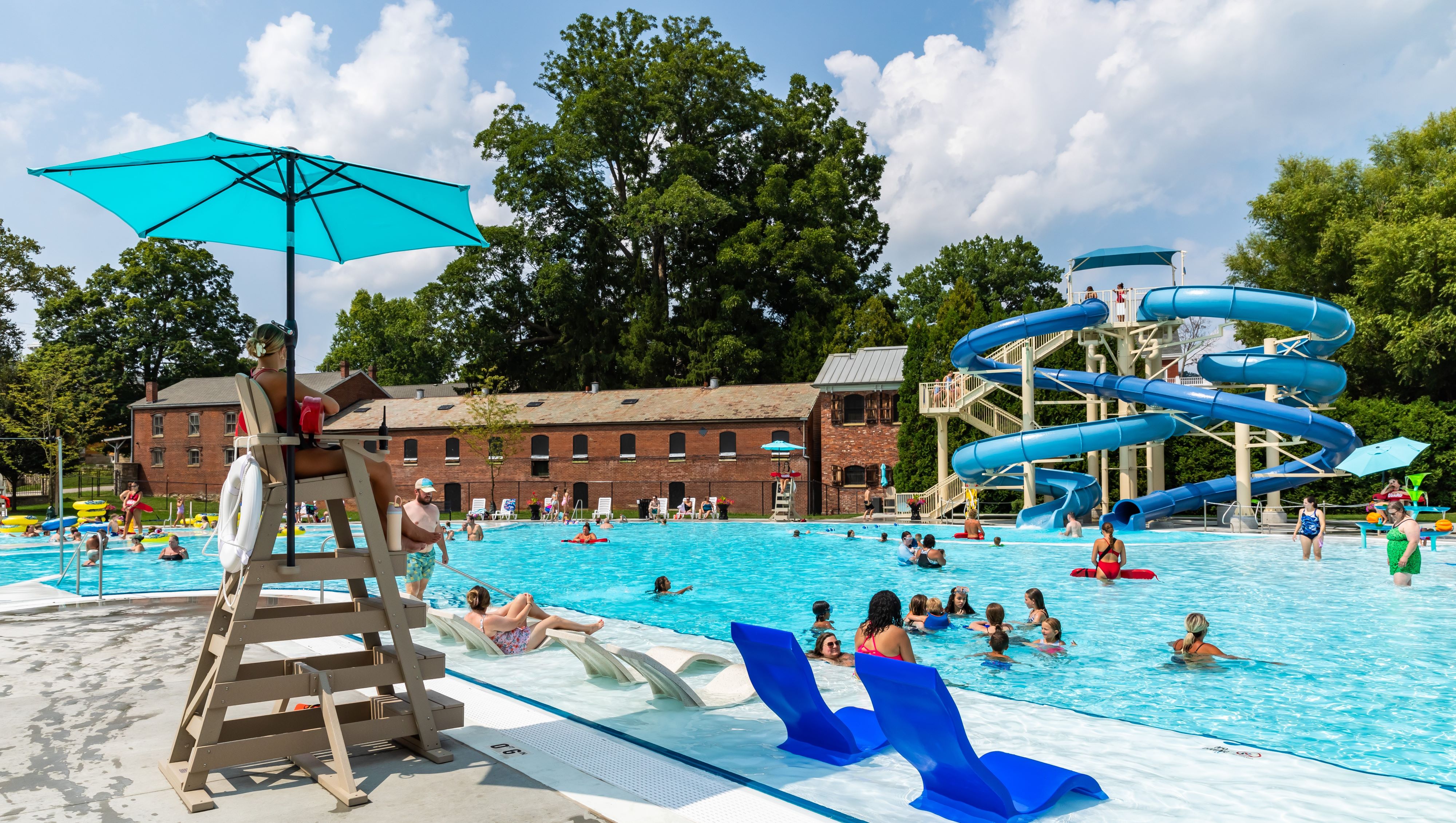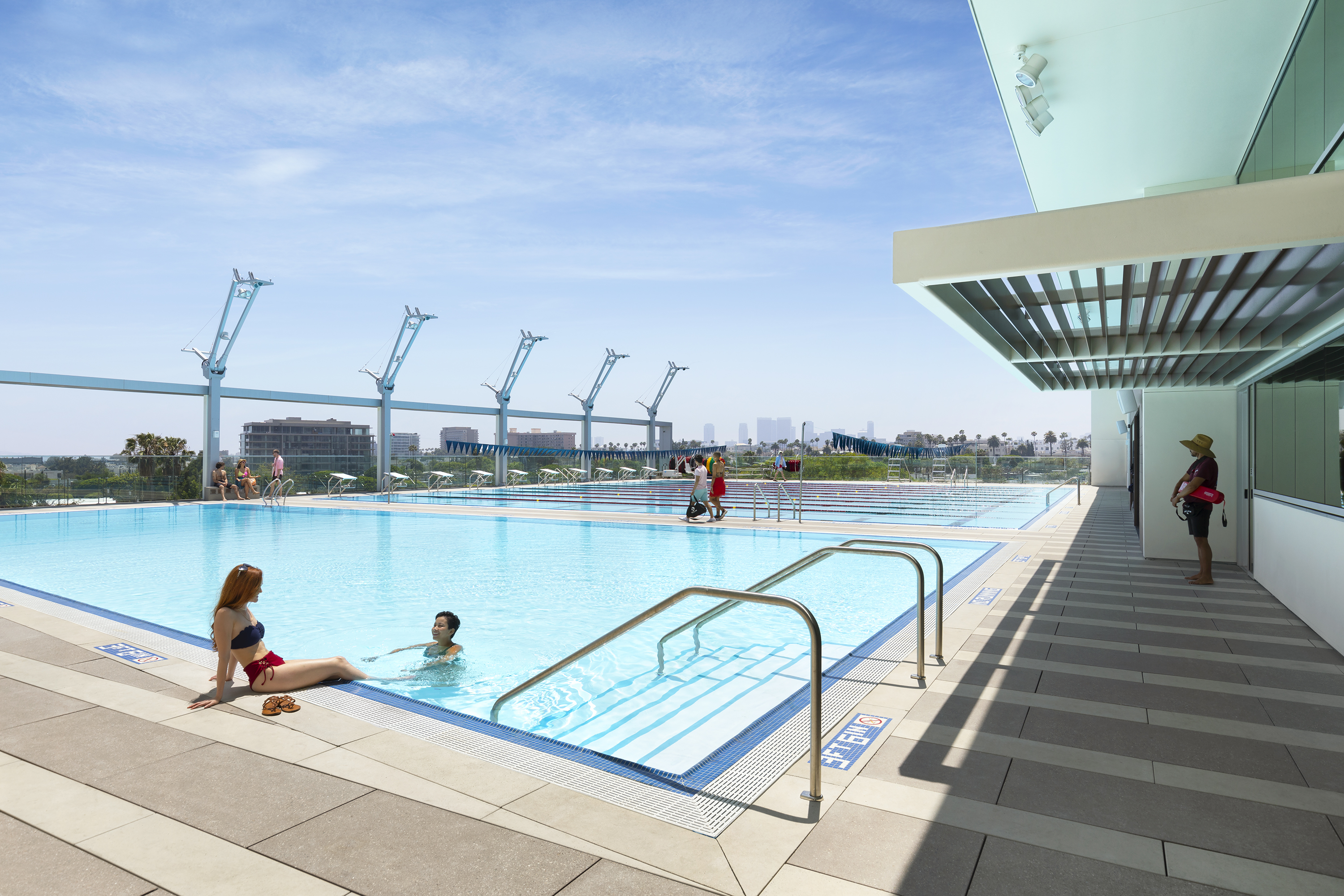Because the designer knew the view was the star of this show. Because the diamond-shaped, glass wind block echoes the triangular tops of the mountains in the distance. Because the design, now decades old, incorporated numerous innovations that were to become the standard for future portable spas, including the use of an acrylic shell. Because the spa is cradled in 10-foot-high support beams, waterproofed and irregularly formed to accommodate the wooded, steeply sloped lot.
Constructed to echo the shape of the mountains beyond, as well as to avoid cluttering the scene with a railing, the diamond-shaped glass wind block is what makes this project particularly special, says its designer, Jerry Smania.
“You’re usually more apt to see a square, with the bottom of the shape aligned with the horizon,” Smania says. “Taking that simple shape and rotating it draws attention to it. I thought it was also fun and so added it to the enclosure to reflect the ‘funness’ of the spa.”
The spa installation also was somewhat unusual at the time, according to Dennis Caston, the builder. The project was assigned at the end of the 1970s, when the industry was “coming out of the wood phase and going more into the acrylics.” This presented a number of obstacles he had to overcome to get the spa just right for the homeowners.
“The spa shells [at the time] were generally made to be supported in a cradle of sand in a hole in the ground,” he says. “In this case, we couldn’t do that. The whole deck was elevated on a wooden tower that was probably 10 feet in the air. We had to make supports out of wood [for the spa], so you could literally go and walk underneath it.”



